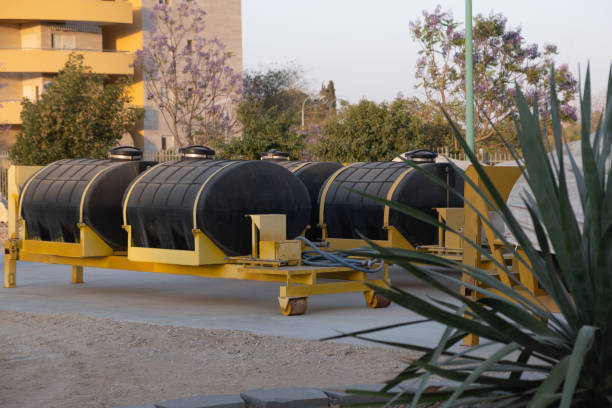
Polypropylene tanks are widely used in various industrial applications due to their excellent chemical resistance and durability. However, it is essential to understand the temperature and pressure limits of polypropylene tanks to ensure safe and reliable operation. This overview provides an outline of the temperature and pressure considerations when using tanque polipropileno.
- Temperature Limits
- Heat Resistance: Polypropylene has good heat resistance, but it does have temperature limits. The typical maximum continuous service temperature for polypropylene tanks ranges from 80°C to 100°C (176°F to 212°F). At temperatures beyond this range, polypropylene may begin to soften or deform, compromising the tank’s structural integrity.
- Cryogenic Conditions: Polypropylene is not suitable for cryogenic applications, as it becomes brittle at extremely low temperatures (-10°C to -20°C or 14°F to -4°F) and may crack upon impact or stress.
- Thermal Expansion: Like all materials, polypropylene experiences thermal expansion and contraction with temperature changes. It is essential to account for these changes in tank design to prevent issues like warping or leakage.
- Pressure Limits
- Operating Pressure: Polypropylene tanks are generally designed to withstand low to moderate internal pressures. The maximum operating pressure for a polypropylene tank typically ranges from 1 to 2 bar (14.5 to 29 psi). Beyond these limits, the tank’s walls may deform or rupture, leading to leaks or potential hazards.
- External Pressure: Polypropylene tanks are not designed to withstand significant external pressures, such as those encountered in underground installations. Buried or submerged tanks must have adequate reinforcement to counteract external pressures.

III. Combined Effects
- Temperature and Pressure Interaction: Temperature changes can affect the pressure inside the tank due to thermal expansion. It is crucial to consider both temperature and pressure when designing and operating polypropylene tanks to ensure they remain within safe limits.
- Chemical Effects: Certain chemicals may react differently with polypropylene at elevated temperatures or pressures. It is essential to conduct a thorough chemical compatibility assessment to avoid potential chemical reactions that could compromise the tank’s integrity.
- Safety Considerations
- Regulatory Compliance: Adhere to relevant industry standards and regulations governing temperature and pressure limits for polypropylene tanks.
- Pressure Relief: Install pressure relief valves or other safety mechanisms to prevent over-pressurization and ensure safe tank operation.
- Inspection and Maintenance: Regularly inspect the tanks for signs of deformation, leakage, or stress. Implement a maintenance plan to address any issues promptly.
Conclusion
Understanding the temperature and pressure limits of bomba pneumática is crucial for ensuring their safe and reliable operation in various industrial applications. By adhering to these limits and incorporating proper safety measures, manufacturers and users can maximize the benefits of polypropylene tanks while maintaining a high level of safety and efficiency.





